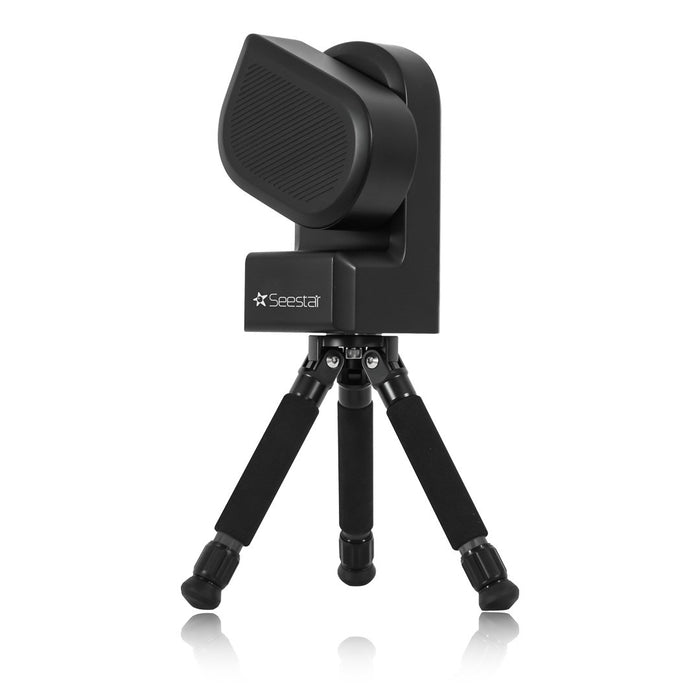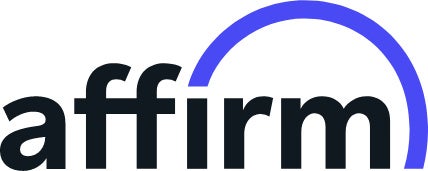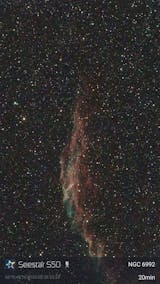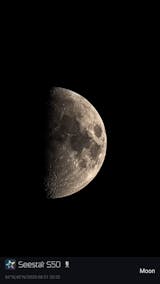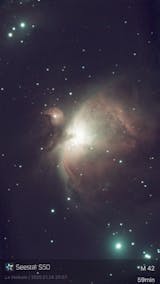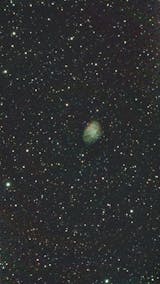I already have a nice refractor setup for astrophotography but I wanted to be able to have a little telescope that I could use to help introduce people to the night sky. I can use the refractor but the S50 allows me to show off objects that would be a more difficult, or impossible, to do when visually observing.
I believe it will also be a useful tool that will allow to do some test observations on objects before committing the larger, more detailed telescope and camera, to hours of data collection.
The housing is very well built and I was surprised at how heavy it was for the size. In this case that is a good thing.
The included tripod is very sturdy and includes a bubble level to help you get things setup. It would be nice if the bubble level was on top of the telescope because once you mount it on the tripod you cannot see it. Luckily the software has a feature that allows to you to adjust the the level using your phone or tablet to view the level settings.
Included with the telescope is a solar filter so that you can view the sun. This is not a hydrogen alpha filter so you will not be able to see solar flares but you can see sun spots.
This first thing you will need to do when you get the S50 is initialize and most likely update the firmware. This whole process only takes 15 or 20 minutes and once you are done you start observing immediately.
The software is easy to use and has a built in catalog of objects for viewing. When viewing the user has the option of taking photos, time lapses and video. For the astrophotographer who wants to do more than just take a pretty picture you can also create observing plans where you can select the object and define the time period in which data is to be collected. This will allow you to collect data without have to constantly monitor the telescope.
The images that are created are fairly detailed right out of the telescope. You also have the option of saving all the intermediate frames that are collected. This will allow you to do your own post processing of the data to create your own personal interpretation of the data.
I feel like I should have something negative to say about the telescope but so far, after 4 or 5 sessions and several hours of data collection, I haven't really found any faults. A couple of times when I told the scope to go to the first object for the viewing session, it pointed to somewhere else in the sky and could not figure out where it was. This ended up being human error more than hardware or software. When I setup the telescope I did not calibrate the built in compass so when it tried to go to the selected object it failed and because it could not see any stars it could not determine where it was. Once I performed the compass calibration it worked fine.
Would I recommend the S50? Absolutely! It is a very easy way to do some casual observing without having to spend a lot of money on mounts, telescopes, cameras, and all the other bits that you find you need.
